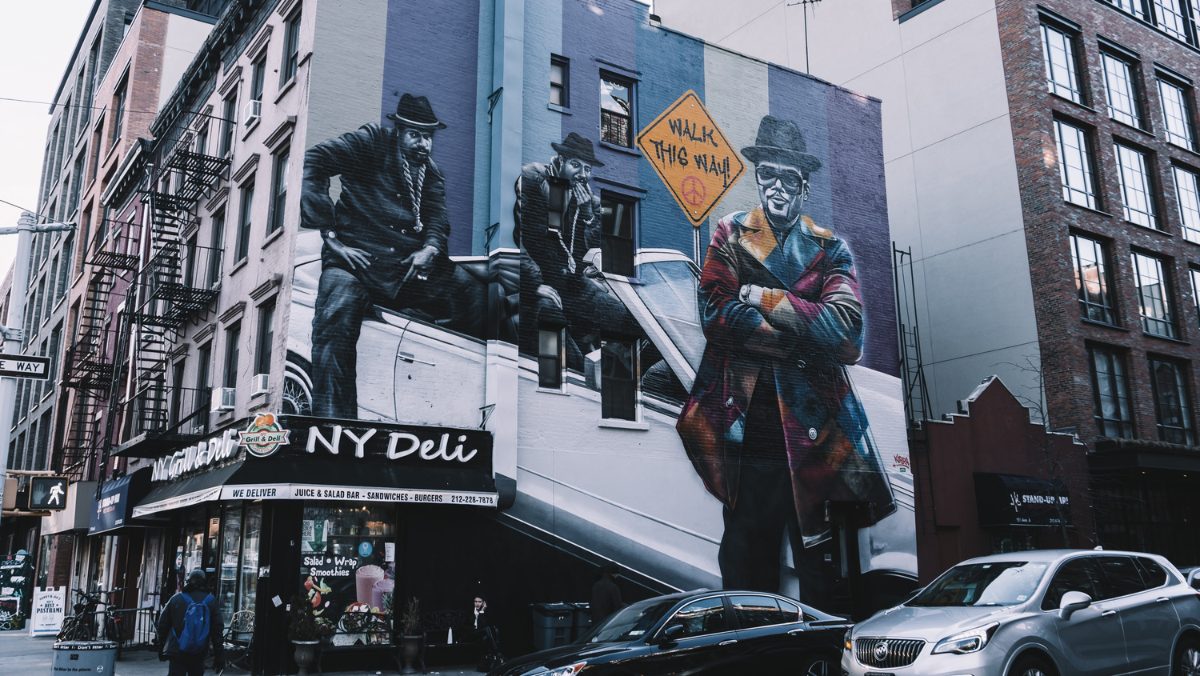
Since time immemorial, humans have leaned on technology to enable creativity. From prehistoric cave drawings to street art and the finest paintings in the Louvre, creativity has always evolved with technology. Personally, I’m a huge fan of technology – especially as a tool to amplify human creativity. Making mood boards, photo retouching, there are many ways that AI has already automated daily tasks that used to be painstakingly slow and repetitive. Recently, much has been made of how AI and data will replace human creativity. But I don’t buy it. As useful as AI already is, and will likely become, it can’t do the one thing that defines human creativity, it can’t be human.
A perfect example of this in action came from watching McCartney 3, 2, 1 which was my absolute highlight this summer. In the six episode series, one demigod of modern music, Rick Rubin, interviews another, Paul McCartney, about how his art came about. The two legends sit at a mixing desk and deconstruct world-changing works of music from decades ago. I watched with an open mouth, ignoring everything and everyone around me (sorry for that Ellen and Biggie!) with a varying, but constant level of goosebumps. It was an 180-minute masterclass in human creativity – and life.
In the first episode, McCartney reveals how the name Sergeant Pepper came about. “I was on a plane with our roadie and we were eating, he said, ‘Can you pass the salt and pepper?’ I thought he said Sergeant Pepper”, McCartney says. “We had a laugh about it. And the more I thought about it, Sergeant Pepper – that’s kind of a cool character.” It just sounded right.
Walk This Way, produced by Rick Rubin, is another great example. By 1986, hip hop originators Run DMC boasted serious local hero status. Jam Master Jay, the group’s DJ, had used the iconic breakbeat from Aerosmith’s track, but the aging rock band had no idea who Run DMC were. When Rubin suggested Run DMC cover Walk This Way in collaboration with Aerosmith, the rap group needed some serious persuading to re-interpret the, by words of MC Run, “hillbilly gibberish” lyrics. The unlikely collaboration took the world by storm, giving Run DMC the first multi-platinum hip hop record and slingshotting the underground genre into the mainstream culture it is today. Again, It just sounded right. And it came about without the interference of an algorithm – just pure human creative genius.
This principle, of creativity being about combining existing things in new ways, was front of mind recently as I was playing with the DALL·E 2 AI image generator. DALL·E 2 uses billions of reference points to create an illustration from a text instruction. Heinz Ketchup recently used it in a clever campaign, asking the AI engine to generate images of ketchup, and it drew….Heinz. DALL·E 2 does have its limitations though; no politics, I discovered, when I tried to create “Obama on a swing in a purple tutu” but by and large the results are very interesting. There has been the usual controversy about the implications – are already-struggling human artists about to be rendered redundant? It’s a question that inevitably points back to the value of human input. What is it, exactly, that a human being brings?
The thing about a system like DALL·E 2 is that, it can obviously only look at what already exists. It’s a bit like the furore that surrounded the prospect of “data driven creativity” for a while. Sure, data can tell you what worked in the past, but does that mean it knows what will work in the future? It’s like learning how to drive with only a rear view mirror. If we only used data to design products, would any of us be using a smartphone?
The genesis of an idea or concept may be called a “happy accident”, but the true power of creativity is to recognise when serendipity has given rise to something great – when it just sounds or looks right. Creativity is based on decades of living in the world, and experiencing life, art, culture and people. Millions of experiences combined in an infinite number of ways gives us the sense of what looks or sounds “right” or “new” or “brilliant”.
We can’t put the AI genie back in the bottle, but neither should we minimise the depth and complexity of human creativity. AI won’t ever be capable of replacing the insight and instinct of a human artist, but it might be able to support that artist by automating tasks that would otherwise have eaten up lots of time.
You can’t just programme a computer, even a super-duper one and tell it to be creative. While optimization and AI can be attractive in their consistency, they aren’t capable of true creativity, only collage and curation. AI would never force a group of middle aged rock stars and an underground rap group into a recording studio. Data would probably just recognise “Sergeant Pepper” as a misheard request to pass the condiments. It surely wouldn’t have made it into an era-defining album. AI will continue to support and streamline human creativity, but it won’t take over for it anytime soon. So, we’re safe, at least for now.
Cover image source: Tatiana Rodriguez